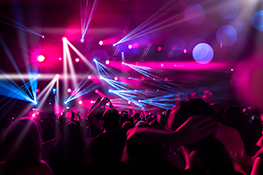White Stage Lights: A Guide to Effective Use
White stage lights, often called “blanks” or “white lights,” are essential tools in the theater, film, and photography industries. They provide a neutral and even illumination, perfect for various applications. Understanding how to use them effectively is crucial for achieving the desired lighting effect.
What are White Stage Lights?
White stage lights emit a white light spectrum, offering a neutral and balanced illumination source. They are typically used in combination with colored gels or filters to create specific color temperatures and effects. While the light itself is white, it can be altered to create a wide range of colors.
Types of White Stage Lights
White stage lights come in various types, each with its own characteristics and applications.
1. Fresnel Lights
Fresnel lights are known for their soft, diffused light, often used for washes and creating a warm, intimate atmosphere. They feature a Fresnel lens that allows for beam control and can create different spot sizes.
2. PAR Lights
PAR lights, or Parabolic Aluminized Reflector lamps, are powerful lights with a wide beam spread. They are typically used for creating a brighter, more even illumination, often employed for backlighting or washing large areas.
3. LED Lights
LED stage lights have become increasingly popular due to their energy efficiency, long lifespan, and color versatility. They offer precise color control and can be adjusted to specific color temperatures, making them ideal for various applications.
Benefits of Using White Stage Lights
White stage lights offer several advantages:
1. Versatility
They can be used with various color gels or filters, allowing for diverse color effects. This flexibility makes them suitable for numerous lighting designs.
2. Neutrality
Their white light spectrum provides a neutral illumination, ensuring accurate color representation and avoiding unwanted color casts.
3. Controllability
Many white stage lights offer adjustable beam angles, allowing for precise control over the light spread and intensity.
Effective Usage Tips
To optimize your use of white stage lights, consider these tips:
1. Color Temperature
Choose the appropriate color temperature based on the desired effect. For example, a cooler color temperature (5500K) might be suitable for daytime scenes, while a warmer temperature (3200K) could create a more intimate atmosphere.
2. Gels and Filters
Experiment with different colored gels or filters to achieve specific lighting effects. Consider the color palette of the production and the desired mood to create the right atmosphere.
3. Beam Control
Adjust the beam angle and intensity of the lights to focus the illumination precisely where needed. This can help create depth, highlight specific areas, or create dramatic shadows.
4. Safety Precautions
Always follow safety guidelines when handling stage lights. Ensure proper ventilation, avoid touching hot surfaces, and use safety equipment when necessary.
Conclusion
White stage lights are essential tools for professionals in various creative fields. Understanding their types, benefits, and effective usage tips is crucial for achieving stunning lighting effects. Whether you’re a theater director, film producer, or photographer, incorporating white stage lights into your productions can elevate your work and create a captivating visual experience.
Contact Us
For more information on white stage lights and other lighting solutions, contact StageLights.in today:
Phone: 1800 200 6000
Mobile: +91 90150 60000
Email: info@stagelights.in


 Auditorium Construction Services
Auditorium Construction Services 